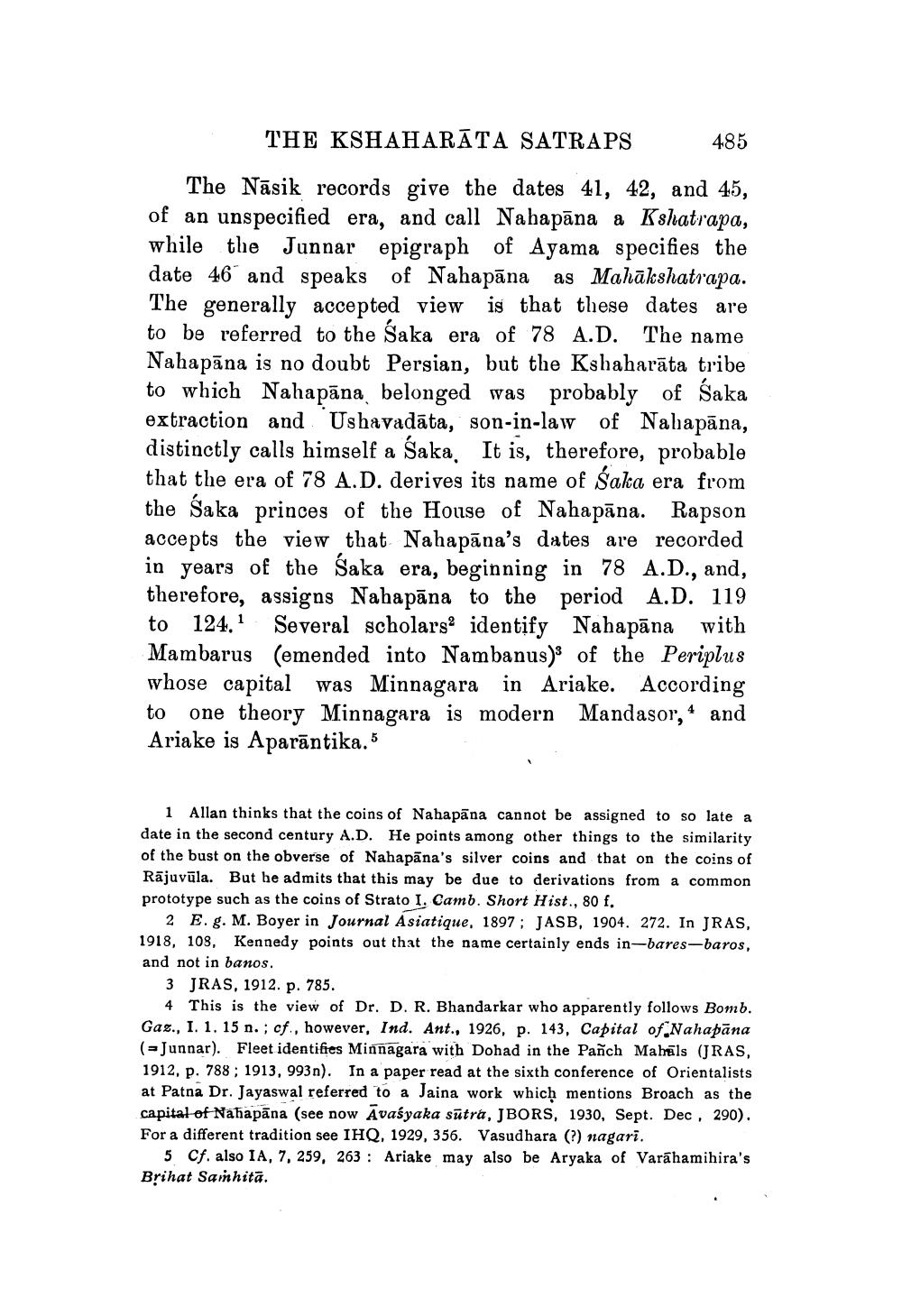________________
THE KSHAHARĀTA SATRAPS
485
The Nāsik records give the dates 41, 42, and 45, of an unspecified era, and call Nahapāna a Kshatrapa, while the Junnar epigraph of Ayama specifies the date 46 and speaks of Nahapāna as Mahākshatrapa. The generally accepted view is that these dates are to be referred to the Saka era of 78 A.D. The name Nahapāna is no doubt Persian, but the Kshaharāta tribe to which Nahapāna belonged was probably of Saka extraction and Ushavadāta, son-in-law of Nahapāna, distinctly calls himself a Saka. It is, therefore, probable that the era of 78 A.D. derives its name of Śaka era from the saka princes of the House of Nahapāna. Rapson accepts the view that Nahapāna's dates are recorded in years of the Saka era, beginning in 78 A.D., and, therefore, assigns Nahapāna to the period A.D. 119 to 124. Several scholars identify Nahapāna with Mambarus (emended into Nambanus) of the Periplus whose capital was Minnagara in Ariake. According to one theory Minnagara is modern Mandasor, 4 and Ariake is Aparāntika.5
1 Allan thinks that the coins of Nahapāna cannot be assigned to so late a date in the second century A.D. He points among other things to the similarity of the bust on the obverse of Nahapāna's silver coins and that on the coins of Rājuvūla. But he admits that this may be due to derivations from a common prototype such as the coins of Strato I. Camb. Short Hist., 80 f.
2 E. g. M. Boyer in Journal Asiatique, 1897; JASB, 1904. 272. In JRAS, 1918, 108, Kennedy points out that the name certainly ends in-bares-baros, and not in banos.
3 JRAS, 1912. p. 785.
4 This is the view of Dr. D. R. Bhandarkar who apparently follows Bomb. Gaz., I. 1. 15 n., cf, however, Ind. Ant., 1926, p. 143, Capital of Nahapāna ( - Junnar). Fleet identifies Minnagara with Dohad in the Pañch Mahāls (JRAS, 1912, p. 788; 1913, 993n). In a paper read at the sixth conference of Orientalists at Patna Dr. Jayaswal referred to a Jaina work which mentions Broach as the capital of Nahapāna (see now Avaśyaka sūtra, JBORS, 1930, Sept. Dec, 290). For a different tradition see IHQ, 1929, 356. Vasudhara (?) nagari.
5 Cf. also IA, 7, 259, 263 : Ariake may also be Aryaka of Varahamihira's Brihat Samhita.




